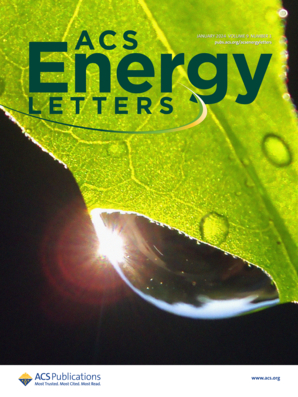Advancing Mn2+/MnO2 Conversion Chemistry through Redox Mediation: Mechanistic Insights and Outlook
IF 19.3
1区 材料科学
Q1 CHEMISTRY, PHYSICAL
引用次数: 0
Abstract
Electrolytic MnO2 batteries based on a two-electron-transfer Mn2+/MnO2 conversion reaction have been attracting growing research interests for large-scale applications due to high voltage and high capacity. However, the low Mn2+/MnO2 conversion efficiency caused by incomplete MnO2 dissolution hinders its practical applications. Recently, redox mediation chemistry has been introduced to improve Mn2+/MnO2 conversion capacity by orders of magnitude. However, as an emerging key strategy, the complex solid–liquid conversion mechanism, the interactions between the redox mediator and the Mn-based species, and the influence of the interfacial environment remain poorly understood. This perspective article aims to discuss critical evaluation criteria, outline key research directions, and summarize relevant characterization methods for redox mediation chemistry in Mn2+/MnO2 conversion. Several future focuses on design principles for high-energy Mn-based cathode materials are proposed. We hope to use a Mn2+/MnO2 system as a model platform to deepen scientific understanding of redox-mediated conversion reactions and inspire broader research in this field.

通过氧化还原调解推进Mn2+/MnO2转化化学:机理研究与展望
基于双电子转移MnO2 +/MnO2转化反应的电解MnO2电池由于具有高电压、高容量等优点,已成为大规模应用的研究热点。但由于MnO2溶解不完全导致的Mn2+/MnO2转化效率低,阻碍了其实际应用。近年来,氧化还原中介化学被引入到提高Mn2+/MnO2转化能力的数量级。然而,作为一种新兴的关键策略,复杂的固液转化机制、氧化还原介质与锰基物质之间的相互作用以及界面环境的影响仍然知之甚少。本文旨在探讨Mn2+/MnO2转化中氧化还原中介化学的关键评价标准,概述重点研究方向,总结相关表征方法。提出了未来高能锰基正极材料设计原则的几个重点。我们希望利用Mn2+/MnO2体系作为模型平台,加深对氧化还原介导的转化反应的科学理解,并激发该领域更广泛的研究。
本文章由计算机程序翻译,如有差异,请以英文原文为准。
求助全文
约1分钟内获得全文
求助全文
来源期刊

ACS Energy Letters
Energy-Renewable Energy, Sustainability and the Environment
CiteScore
31.20
自引率
5.00%
发文量
469
审稿时长
1 months
期刊介绍:
ACS Energy Letters is a monthly journal that publishes papers reporting new scientific advances in energy research. The journal focuses on topics that are of interest to scientists working in the fundamental and applied sciences. Rapid publication is a central criterion for acceptance, and the journal is known for its quick publication times, with an average of 4-6 weeks from submission to web publication in As Soon As Publishable format.
ACS Energy Letters is ranked as the number one journal in the Web of Science Electrochemistry category. It also ranks within the top 10 journals for Physical Chemistry, Energy & Fuels, and Nanoscience & Nanotechnology.
The journal offers several types of articles, including Letters, Energy Express, Perspectives, Reviews, Editorials, Viewpoints and Energy Focus. Additionally, authors have the option to submit videos that summarize or support the information presented in a Perspective or Review article, which can be highlighted on the journal's website. ACS Energy Letters is abstracted and indexed in Chemical Abstracts Service/SciFinder, EBSCO-summon, PubMed, Web of Science, Scopus and Portico.
 求助内容:
求助内容: 应助结果提醒方式:
应助结果提醒方式:


